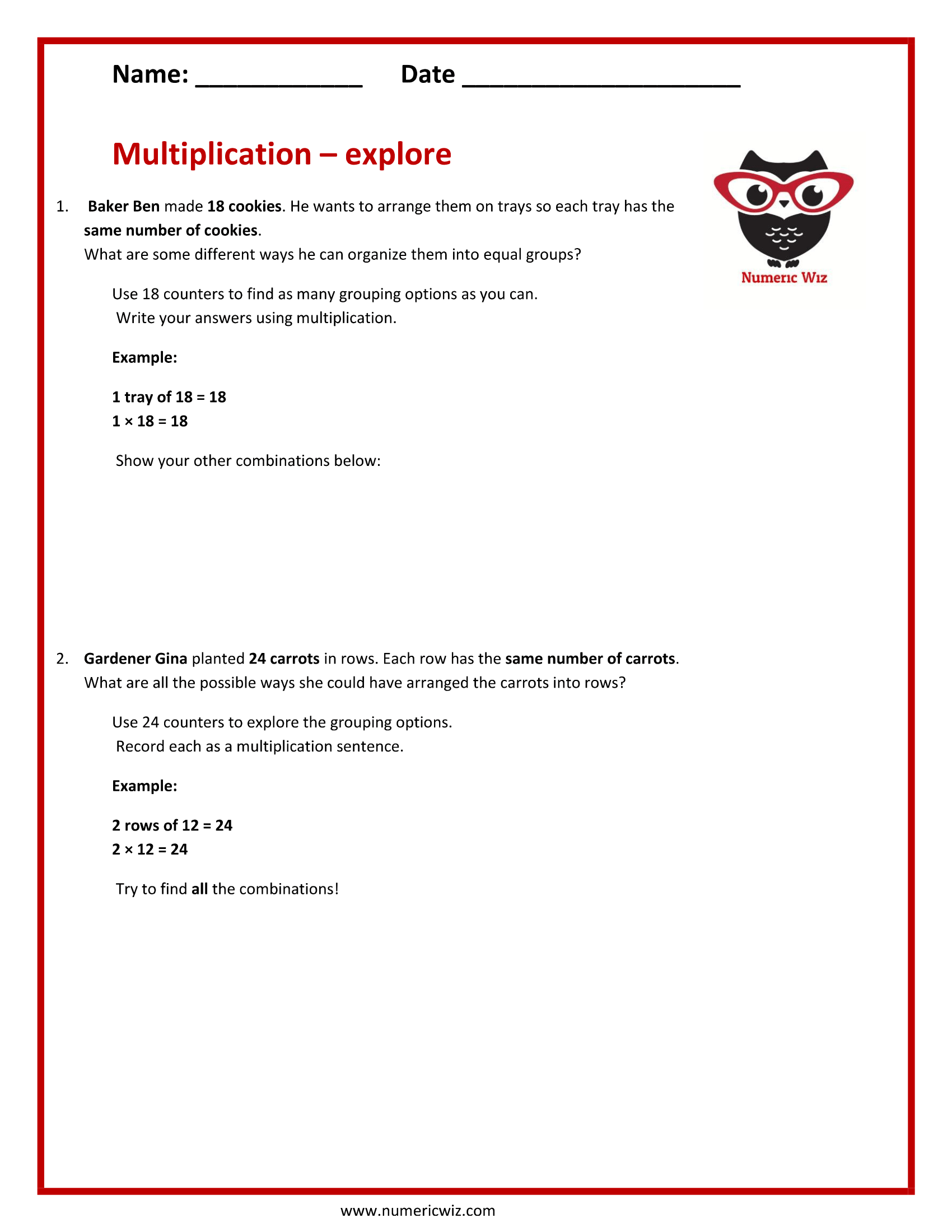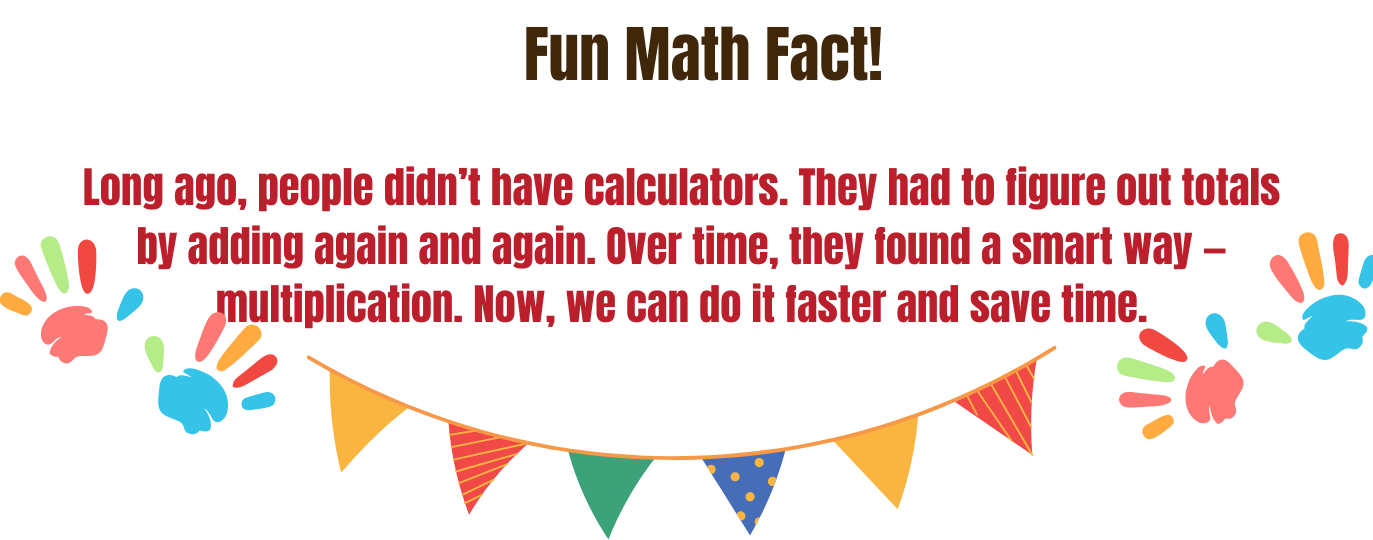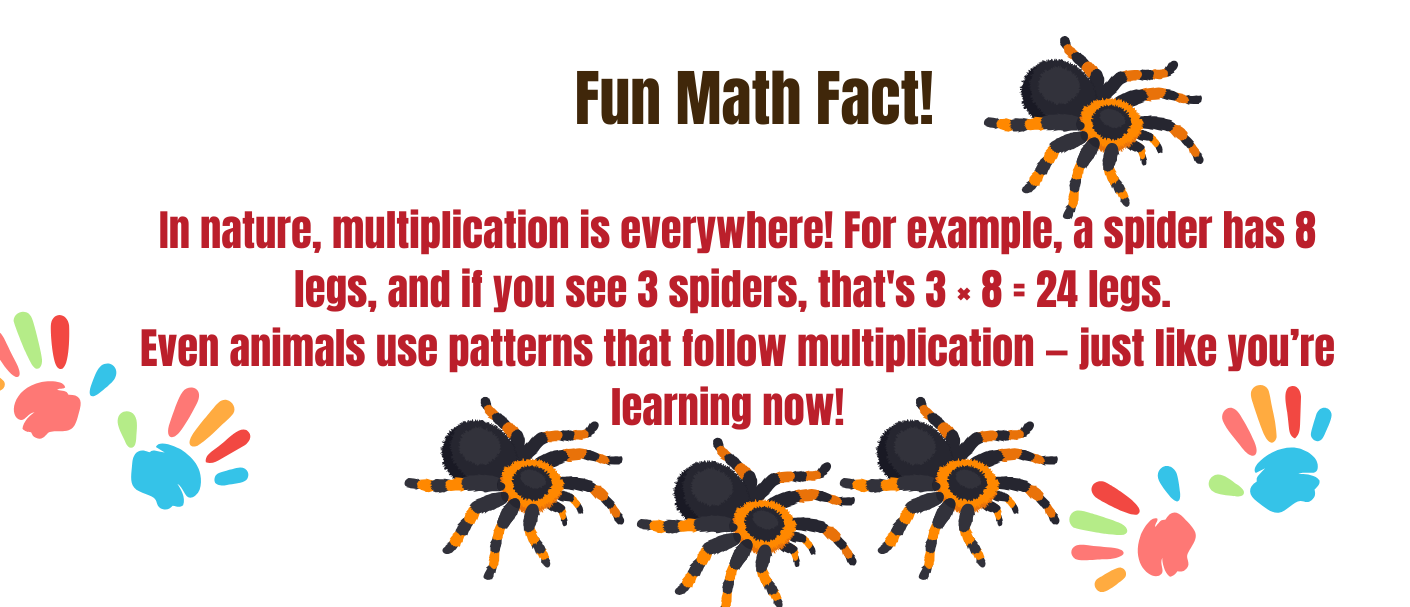How to create equal groups and represent them with multiplication
That multiplication can be used in many real-life situations
How to find multiple ways to make the same total using different groupings
To move from hands-on learning (using counters or pictures) to symbolic learning (writing number sentences)

Let’s dive into the world of multiplication by exploring how we can organize and count things in equal groups. This worksheet helps students understand multiplication in a hands-on way by thinking about real-life situations like baking cookies, planting carrots, and storing books.
Children will use counters, drawings, or multiplication sentences to explore different grouping options and practice flexible thinking. Each problem encourages learners to find more than one way to arrange the same total using equal groups.

They’ll explore questions like:
How can 18 cookies be placed equally on trays?
How many rows of carrots make 24?
How does multiplication help Mia count all her rings?
From organizing jewelry to planning a garden or staying hydrated, every problem connects multiplication to something familiar and fun.
How many rings does Mia have altogether?
We know that each box has 6 rings.
Mia has 4 boxes.
So, we are putting 6 rings in each of the 4 boxes.
We can write this as a multiplication sentence:
4 × 6 = 24
Answer:
Mia has 24 rings in total.
You can also draw 4 circles (for the boxes), and place 6 dots in each one to show the rings — this helps if you're using counters or drawing equal groups!
Explore Different Grouping Options:
Students are asked to find all the possible ways to group:
18 cookies (Baker Ben’s trays)
24 carrots (Gardener Gina’s rows)
Using objects or counters, children will discover and record different combinations like:
2 × 9 = 18
3 × 6 = 18
4 × 6 = 24
6 × 4 = 24
This builds flexible thinking and helps them see that the same number can be grouped in different ways.
Real-Life Word Problems:
Students then solve simple multiplication problems using real scenarios:
Mia’s jewelry boxes (4 × 6 = 24 rings)
Books on shelves (5 × 8 = 40 books)
Cups of water in a week (7 × 2 = 14 cups)
These problems encourage children to draw equal groups, use repeated addition, or write multiplication sentences to show their thinking.
Builds a strong conceptual understanding of multiplication
Makes math interactive and relatable
Encourages kids to explore and think, not just memorize
Supports visual learners through group drawings or counter use

This worksheet isn’t just about getting the answer — it’s about understanding the “why” behind multiplication. With fun, everyday examples, students will see how multiplication works in the real world and feel confident exploring equal groups on their own.
Download the worksheet, solve it, and upload your answers to our “Evaluate Your Work” page. Our awesome teachers will check it and send feedback just for you! Homework has never been this fun—or this helpful!
Encourage your students to explore, imagine, and discover how multiplication works in everyday life — one group at a time!
For a limited time
